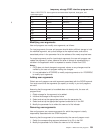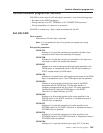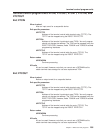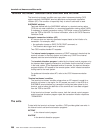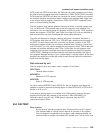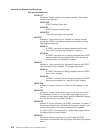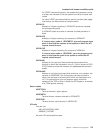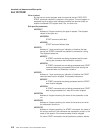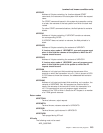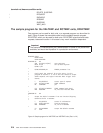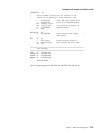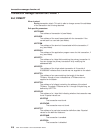CICS drives the XICTENF exit when the ‘terminal not known’ condition occurs after
the interval control program has been invoked by an EXEC CICS START command.
CICS drives the XALTENF exit when the ‘terminal not known’ condition occurs after
the terminal allocation program has been invoked by the transient data trigger level
or the interval control program. Note that an EXEC CICS START command could
result in both exits being invoked.
The exit program must indicate whether the terminal exists on another system and,
if so, on which one. CICS passes data to the exit program to help establish this
information. You can use the same exit program at both exit points. CICS supplies a
sample exit program, DFHXTENF (see Figure 2 on page 214), that can be used at
both exits and that can deal unchanged with some typical situations.
The exits are designed to deal with ‘terminal not known’ conditions that occur in
CICS regions other than the TOR. For a TOR/AOR pair, enable the exit program in
the AOR. The exits cannot deal with a ‘terminal not known’ condition in the TOR
and the exit program should not normally be enabled there. However, if more than
one TOR exists, you may need to enable the exit program in each TOR to deal with
requests for terminals owned by other TORs. In this case, the exit program must
recognize terminals that should be owned by this system and reject the requests
(‘UERCTEUN’). Although the exit provides as much data as possible, the logic of
your program depends entirely on your system design. A simple solution to the most
complex case would be to make the name of each terminal reflect the netname or
sysid of its owning region.
Data returned by exit
The exit program must set a return code in register 15 as follows:
UERCTEUN
Terminal does not exist
UERCNETN
Netname of TOR returned
UERCSYSI
Sysid of TOR returned.
For return codes UERCNETN and UERCSYSI, the exit program must place the
netname or sysid of the terminal-owning region in fields UEPxxNTO or UEPxxSYO
(where xx is AL or IC).
If the terminal-owning region is a member of a VTAM generic resource, the exit
program should place the netname of the terminal in field UEPxxNNO. For
information about using ATI with VTAM generic resources, see the
CICS
Intercommunication Guide
.
Exit XALTENF
When invoked
By the terminal allocation program when the terminal that an ATI request
from transient data or interval control requires is unknown in this system.
The exit program is expected to give a return code indicating whether the
terminal exists on another connected CICS system and, if so, on which one.
terminal not known condition exits
Chapter 1. Global user exit programs 209



